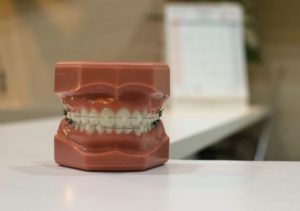Is Gingivitis Treatable?
 When it comes to gum disease, gingivitis is a common diagnosis. It is also the first stage of gum disease. Unfortunately, you may not know you have it until you go to see the dentist. However, you can look for certain symptoms before going to see a dentist. These symptoms include a tender feeling around your gum line. Additionally, your gums may appear red and puffy with extreme sensitivity to heat, cold, or pressure. Your gums also bleed easily during brushing or flossing. While these feelings of discomfort come and go, they should be mild. Extreme sensitivity or pain could be a sign of another, more serious problem. Once you know that you have gingivitis, what can you do about it?
When it comes to gum disease, gingivitis is a common diagnosis. It is also the first stage of gum disease. Unfortunately, you may not know you have it until you go to see the dentist. However, you can look for certain symptoms before going to see a dentist. These symptoms include a tender feeling around your gum line. Additionally, your gums may appear red and puffy with extreme sensitivity to heat, cold, or pressure. Your gums also bleed easily during brushing or flossing. While these feelings of discomfort come and go, they should be mild. Extreme sensitivity or pain could be a sign of another, more serious problem. Once you know that you have gingivitis, what can you do about it?
What Causes Gingivitis?
The buildup of plaque and germs causes gingivitis. Over time, this plaque hardens into a tough white substance called tartar. Tartar is difficult to get off on your own. A dental hygienist is your best option for removing it. While regular brushing and flossing is beneficial to your teeth, missing your regular cleanings leads to tartar buildup in areas that are difficult to reach on your own. All the germs found in tartar could build up causing inflamed gums. As a result, this often leads to a progression of gingivitis called periodontitis.
Is Gingivitis Reversible?
Thankfully, gingivitis is reversible when you address the tartar buildup. It’s possible to get your gums pink and healthy again. First, start with a trip to the dentist to give your mouth a boost. Once there, a dentist or dental hygienist cleans under the gum line, removing the tartar you can’t reach yourself. They also give your teeth a good, deep cleaning and identify any forming cavities or other problems you might have. If you have gingivitis, your dental hygiene has been suffering for some time. It never hurts to check on your dental hygiene routine.
From there, you just need to brush and floss twice a day to keep your teeth pearly white and your gums healthy. Ask your dentist for more information on how to brush effectively, what toothpastes to use, and so on. You’ll be able to get a recommendation specifically for your mouth. If seeing the dentist just isn’t in the cards for you right now, don’t give up: start brushing and flossing now, and make it a point to see your dentist as soon as possible. You can slow the progression of gingivitis from home!
What if I Don’t Treat Gingivitis?
If you don’t treat gingivitis, the problem will get worse. This mild form of gum disease can progress to something that’s much more difficult to tend to yourself. Periodontitis is a progressive form of gum disease that needs your dentist’s treatment–and in advanced stages, the care of a specialist. Advanced periodontitis can lead to tooth loss, gum loss, and loss of jawbone. It also comes with unpleasant side effects like a constant bad taste in your mouth and foul breath. The sooner you intervene in gingivitis, the better the odds that you won’t have to deal with gingivitis yourself.
Gingivitis works like an early warning sign for your mouth. If you’ve noticed blood while brushing or flossing, sensitivity to temperature, or sensitivity to pressure you may have gingivitis. See a dentist and recommit to keeping up with brushing and flossing, and work to reverse this condition.
